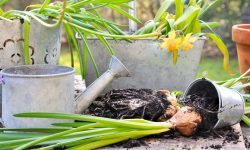Boxwoods are a classic choice for structured gardens, adding elegance and greenery year-round. Proper trimming is essential to maintain their shape, health, and density. Knowing when and how to trim boxwoods can mean the difference between a lush, tidy hedge and a sparse, uneven one. Many gardeners struggle with timing, often cutting too early or too late, which can stress the plant or reduce its aesthetic appeal.
Understanding seasonal growth patterns and the plant’s natural cycle is key. By following expert guidance, you can schedule trims to encourage compact growth, prevent disease, and enhance flowering and foliage color. Proper tools, consistent techniques, and careful attention to timing allow gardeners to enjoy perfectly shaped boxwoods throughout the year. This guide provides detailed advice on seasonal trimming, common mistakes to avoid, and strategies for long-lasting, healthy hedges.
Understanding Boxwoods and Their Growth Cycle

Types of Boxwoods
Boxwoods come in a variety of species and cultivars, each with unique growth habits. Common types include English boxwood, American boxwood, and Japanese boxwood. Some grow densely and slowly, while others expand more rapidly and require frequent maintenance. Choosing the right variety for your climate and garden space is crucial. Understanding the specific growth pattern helps in planning pruning schedules and shaping strategies.
Knowing the mature size and shape of your boxwood also informs how much to trim. Some types respond well to heavy pruning, while others thrive with light, regular trimming. Seasonal growth rates affect how quickly new shoots develop, impacting the timing of each trim. Recognizing these differences ensures the plant remains healthy and aesthetically pleasing throughout the year. Proper selection and understanding of species-specific growth cycles provide a foundation for expert trimming practices.
Seasonal Growth Patterns
Boxwoods follow a seasonal growth cycle, with active growth in spring and summer, slower growth in fall, and dormancy in winter. Spring growth is the most vigorous, making it ideal for structural shaping and removing damaged stems. During summer, new shoots develop quickly, allowing for minor touch-ups to maintain form. Fall requires caution, as late trimming can expose tender stems to cold damage.
Understanding the timing of growth helps gardeners plan pruning effectively. Dormant periods reduce the plant’s resilience, making late winter or early spring the optimal trimming window for heavy cuts. Light maintenance during the growing season ensures the plant maintains its dense, uniform shape. By aligning trimming practices with natural growth cycles, boxwoods stay healthy, resilient, and beautifully structured year-round.
When to Trim Boxwoods for Optimal Health and Shape
Trimming boxwoods at the right time is crucial for maintaining both their health and visual appeal. Early spring, just before new growth begins, is the ideal period for heavy pruning. During this time, the plant can recover quickly and develop dense foliage throughout the growing season. Cutting at the wrong time, such as during extreme heat or late fall, can stress the plant, leading to leaf burn, dieback, or reduced resilience. Planning trims according to seasonal growth patterns ensures that boxwoods remain vibrant and structured.
Light maintenance trimming is often needed during late spring and summer. These touch-ups remove stray shoots, maintain uniform shape, and prevent the plant from becoming overgrown or leggy. For boxwoods that flower occasionally, pruning immediately after blooms fade preserves their aesthetic display while encouraging dense new growth. Removing dead or weak branches during these months helps redirect energy to healthy shoots, improving both foliage density and overall plant vigor.
Trimming during dormancy, in late fall or winter, should be minimal. Heavy cuts in cold weather expose tender stems to frost damage, which can reduce the plant’s lifespan and compromise its structure. Instead, focus on removing only dead or diseased branches, leaving major shaping for early spring. By aligning trimming practices with the natural growth cycle, gardeners can ensure compact, resilient, and beautifully shaped boxwoods that thrive year after year, providing lush, green hedges and elegant landscape features.
Essential Tools and Techniques for Trimming Boxwoods
Using the right tools is fundamental for effective boxwood trimming. Sharp, clean hand pruners are ideal for cutting small branches, ensuring clean cuts that heal quickly. For larger stems, hedge shears or loppers provide the necessary leverage while maintaining precision. Avoid using dull blades, as they crush stems, creating wounds that are prone to disease. Regularly sterilizing tools with rubbing alcohol or a mild bleach solution prevents the spread of pests and pathogens between plants. Proper tools make trimming safer, more efficient, and less stressful for the shrub.
Techniques play an equally important role in achieving the desired shape. When trimming, step back frequently to assess overall symmetry and proportion. Trim gradually rather than removing large amounts at once, as heavy cuts can shock the plant and lead to uneven growth. Maintaining a slightly rounded or formal hedge shape encourages dense foliage while allowing sunlight to reach inner branches. Pinching tips of new growth during the growing season promotes bushiness and fills gaps in sparse areas, contributing to a uniform, aesthetically pleasing appearance.
Safety and ergonomics are also critical during trimming. Wear gloves to protect your hands from scratches and long sleeves to avoid irritation from foliage. Position yourself comfortably to avoid strain and work in sections to maintain control over shape and precision. Paying attention to posture and tool handling reduces fatigue and ensures consistent results. By combining the proper tools, effective techniques, and mindful safety practices, gardeners can achieve perfectly trimmed boxwoods that remain healthy, resilient, and visually striking year-round.
Encouraging Dense and Bushy Growth
Achieving dense, bushy boxwoods requires consistent attention and proper trimming techniques. Regular light pruning during the growing season helps maintain compact foliage and encourages branching. Pinching or shearing the tips of new shoots stimulates the plant to produce multiple lateral branches, filling in gaps and creating a uniform, lush appearance. Avoid cutting too deeply into older wood, as these areas may not regenerate quickly, leaving bare spots.
Nutrient management also plays a critical role in promoting bushiness. Fertilize boxwoods with a balanced, slow-release fertilizer in early spring and mid-summer to support healthy growth. Adequate watering, without over-saturating the soil, ensures roots can absorb nutrients efficiently. Mulching around the base helps retain moisture, regulate soil temperature, and reduce competition from weeds. Combined, proper trimming and fertilization enhance vigor, allowing boxwoods to develop dense, vibrant foliage over time.
Environmental factors further influence growth. Plant boxwoods in locations with bright, indirect sunlight and sufficient air circulation to prevent disease while supporting photosynthesis. Avoid overcrowding, as dense planting can reduce airflow, encouraging pests and fungal infections that weaken the shrub. By combining careful pruning, appropriate nutrition, and ideal growing conditions, gardeners can consistently achieve full, bushy, and aesthetically pleasing boxwoods that enhance the structure and beauty of any landscape. Regular maintenance ensures these shrubs remain resilient, healthy, and visually striking year-round.
Fertilizing Boxwoods for Healthy Growth
Proper fertilization is essential for maintaining dense, vibrant boxwoods. Providing the right nutrients supports leaf development, strengthens branches, and enhances the plant’s resilience to pests and environmental stress. A balanced, slow-release fertilizer with equal parts nitrogen, phosphorus, and potassium is ideal for promoting steady growth throughout the season. Nitrogen encourages lush foliage, phosphorus supports root development, and potassium improves overall plant health. Applying fertilizer according to package instructions prevents overfeeding, which can burn roots or stimulate weak, tender growth vulnerable to winter damage.
Timing is equally important when fertilizing boxwoods. Early spring is the best period for feeding, just as new growth begins to emerge. A second application in mid-summer can maintain vigor, especially for plants in sandy or nutrient-poor soils. Avoid late-season fertilization in the fall, as it may trigger new growth that cannot withstand frost. Regular feeding ensures boxwoods recover quickly from pruning, maintain dense structure, and display a rich, green color that enhances their aesthetic appeal in landscapes and formal hedges.
In addition to nutrient supply, soil preparation enhances fertilizer effectiveness. Loosen compacted soil and remove weeds around the base to improve nutrient absorption. Mulching helps retain moisture, regulate soil temperature, and prevent nutrient runoff. Combining proper fertilization with soil management and seasonal trimming promotes healthy, full, and resilient boxwoods. By consistently providing the right nutrients, gardeners can enjoy well-shaped, lush shrubs that thrive year-round while minimizing stress and susceptibility to disease or environmental challenges.
Watering and Soil Management for Optimal Health
Proper Watering Techniques
Consistent and appropriate watering is vital for healthy boxwoods. These shrubs prefer soil that is evenly moist but well-draining to prevent root rot. Overwatering can suffocate roots and encourage fungal growth, while underwatering can lead to leaf browning, branch dieback, and stunted growth. Water deeply to ensure the root zone receives adequate moisture, especially during hot summer months or dry spells. Early morning watering is ideal, allowing foliage to dry during the day and reducing the risk of fungal infections.
Mulching complements watering by retaining soil moisture and regulating temperature around the roots. Organic mulches, such as bark or compost, provide additional nutrients as they decompose. Avoid piling mulch directly against the plant’s base to prevent stem rot. Observing seasonal changes and adjusting watering frequency ensures boxwoods remain vibrant and dense. Proper hydration supports recovery after pruning, encourages lateral branching, and maintains rich, green foliage that enhances the overall appearance of hedges and landscaped areas.
Soil Quality and Maintenance
Healthy soil is fundamental for thriving boxwoods. Well-draining, slightly acidic to neutral soil provides optimal conditions for root development and nutrient absorption. Compacted or clay-heavy soils restrict root growth and increase the risk of waterlogging. Amending soil with organic matter, such as compost or well-rotted manure, improves aeration, fertility, and drainage, promoting stronger and more resilient shrubs.
Regular monitoring of soil pH and nutrient content helps maintain ideal conditions. Adjust fertilization and watering based on soil tests to address deficiencies or imbalances. Proper soil care, combined with strategic pruning, watering, and mulching, supports dense growth, minimizes stress, and enhances the plant’s resistance to pests, diseases, and environmental extremes. Healthy soil ensures boxwoods remain robust, lush, and visually appealing year-round.
Dealing with Environmental Stress and Winter Protection
Protecting Boxwoods from Winter Damage
Boxwoods are hardy but can suffer damage from harsh winter conditions such as frost, ice, and strong winds. Cold temperatures can desiccate leaves and branches, causing browning or dieback. Heavy snow or ice accumulation can break branches, altering the plant’s shape. To prevent damage, apply a thick layer of mulch around the root zone to insulate and stabilize soil temperature. Covering vulnerable shrubs with burlap or horticultural fabric provides additional protection against desiccating winds and frost.
Placement and environmental adjustments also help reduce stress. Avoid planting boxwoods in exposed areas where they are directly hit by winter winds. Installing temporary windbreaks or using natural barriers such as taller shrubs can shield plants from extreme conditions. Regular inspection throughout winter ensures early intervention if branches break or leaves brown. Combining physical protection, strategic placement, and preventive monitoring preserves the structure, health, and dense foliage of boxwoods, allowing them to emerge in spring ready for new growth.
Managing Heat and Drought Stress
Boxwoods can also be stressed by excessive heat and drought during summer. Prolonged high temperatures and insufficient moisture cause leaves to wilt, yellow, or drop, weakening the plant and reducing its density. Consistent, deep watering is crucial, targeting the root zone while avoiding waterlogged soil. Mulching helps retain moisture, moderates soil temperature, and reduces evaporation, keeping roots cool and hydrated.
Additional measures include planting boxwoods in areas with partial shade during peak summer heat to reduce sunburn and dehydration. Regular monitoring of soil moisture ensures timely watering and prevents stress-related damage. If leaves show signs of heat stress, applying a fine mist or light irrigation in the early morning can help reduce leaf temperature. By combining mulching, shading, and careful watering, gardeners can protect boxwoods from heat and drought, maintain healthy growth, and ensure dense, lush foliage even during challenging summer conditions.
Seasonal Care and Preparation for the Next Trim
Spring Care
Spring is the critical season for boxwoods, marking the beginning of active growth and the ideal time for major shaping. Start by carefully inspecting each shrub, removing dead, damaged, or diseased branches to prevent infection and encourage healthy development. Light pruning of new shoots stimulates lateral branching, filling gaps and creating a dense, uniform appearance. Avoid cutting into old wood excessively, as it may not regenerate quickly, leaving bare spots. Maintain the natural shape and symmetry while ensuring that sunlight reaches the inner foliage, which promotes overall plant vigor.
Soil preparation and nutrition are equally vital in spring. Apply a balanced, slow-release fertilizer to support strong growth and root development. Loosen compacted soil and ensure proper drainage to prevent root rot. Mulch around the base retains moisture, regulates temperature, and suppresses weeds, creating ideal conditions for growth. Spring care is also an excellent time to check for pests early, allowing treatment before infestations escalate. By combining careful pruning, soil management, and pest monitoring, gardeners set the stage for lush, healthy, and well-shaped boxwoods throughout the growing season.
Summer Care
During summer, boxwoods experience rapid growth, requiring regular monitoring and light maintenance. Focus on minor trimming to maintain symmetry, remove stray shoots, and prevent overcrowding. Avoid heavy cuts in hot weather, as they can stress the plant and make it more vulnerable to leaf scorch or dieback. Inspect plants regularly for spider mites, leafminers, and fungal infections, as warm, humid conditions promote infestations. Early detection and prompt treatment help maintain dense, healthy foliage.
Watering and nutrition are essential in summer. Provide consistent moisture while avoiding waterlogged soil, ideally watering in the morning to reduce fungal risks. Mulching conserves moisture and protects roots from heat stress. Supplemental feeding with a slow-release fertilizer mid-summer supports ongoing growth, vibrant leaves, and strong structure. By combining careful light trimming, attentive watering, pest monitoring, and proper nutrition, gardeners can keep boxwoods healthy, dense, and visually appealing, ready to transition smoothly into fall with minimal stress or damage.
Fall Care
Fall signals the end of active growth for boxwoods, and pruning should be limited to light trimming. Heavy cuts can stimulate tender new growth that is vulnerable to frost and winter damage, so remove only unruly, weak, or diseased branches. Take this time to inspect each shrub for signs of pest damage or disease that may have developed during summer. Prompt treatment of minor issues prevents them from worsening during dormancy. Maintaining shape and symmetry without stressing the plant ensures a healthy structure that can withstand cold temperatures and wind exposure. Additionally, removing fallen leaves and debris around the base reduces the risk of fungal growth and helps maintain good airflow around the plant.
Soil and root preparation are essential in fall to ensure survival through winter. Apply a generous layer of mulch around the base to insulate roots, retain moisture, and prevent frost heaving. Avoid late-season fertilization, which can trigger vulnerable new growth. Check soil drainage and adjust watering as needed, ensuring that roots stay hydrated but not waterlogged. If temperatures fluctuate significantly, protect sensitive shrubs with burlap or windbreaks to prevent desiccation. Proper fall care strengthens boxwoods, allowing them to enter dormancy healthy, resilient, and structurally sound. This preparation promotes vigorous growth and dense, well-shaped foliage in spring, creating the foundation for long-term landscape beauty and vitality.
Winter Care and Preparation
During winter dormancy, boxwoods require minimal maintenance but need careful protection from environmental stress. Trim only dead, damaged, or diseased branches to prevent further injury and reduce the risk of pest infestations. Avoid heavy pruning during this period, as the plant is less resilient and fresh cuts are highly susceptible to frost damage. Snow and ice accumulation can weigh down branches, causing breakage, while harsh winter winds can desiccate foliage, leading to browning and dieback. Covering vulnerable shrubs with burlap, installing temporary windbreaks, or using horticultural fabric in cold regions helps maintain structural integrity and prevents damage to exposed branches. Monitoring plants regularly for stress during winter ensures timely intervention if problems arise.
Watering needs decrease in winter, but occasional checks are essential to prevent soil from drying out completely. Mulching around the base of the shrub insulates roots, regulates soil temperature, and protects against frost heaving. Avoid walking on frozen soil near the root zone, as this can compact soil and reduce aeration. If winter temperatures fluctuate, ensure that ice or snow does not stay on the foliage for prolonged periods. By combining minimal pruning, consistent monitoring, mulching, and protective measures, gardeners help boxwoods survive dormancy in optimal condition. This careful winter preparation ensures that shrubs retain their shape, remain healthy, and are ready for vigorous growth and successful trimming cycles in the upcoming spring.
Common Mistakes to Avoid When Trimming Boxwoods
Over-Pruning
Over-pruning is one of the most common mistakes when maintaining boxwoods. Removing too much foliage at once can stress the plant, reduce its ability to photosynthesize, and cause sparse growth. Heavy cuts during the wrong season, especially late fall or winter, leave the plant vulnerable to frost damage and disease. Over-pruned boxwoods often take months to recover, and the resulting gaps in foliage may never fully fill in.
To avoid over-pruning, trim gradually and focus on maintaining natural shape rather than forcing a rigid design. Step back frequently during cutting to assess symmetry and density. Limit heavy pruning to early spring when the plant is poised for vigorous growth. Light maintenance trims during the growing season should focus on stray shoots and minor shaping. By pacing your cuts and understanding seasonal growth, you preserve plant health and maintain lush, dense foliage throughout the year.
Trimming at the Wrong Time
Trimming boxwoods at the wrong time is another frequent error. Heavy cuts during summer heat or late fall can cause leaf burn, dieback, and increased susceptibility to pests. Dormant plants in winter are less resilient, and pruning during this period can result in frost damage and stunted growth. Timing mistakes often compromise both the health and appearance of the shrub.
The best strategy is to align pruning with the plant’s natural growth cycle. Heavy trimming is ideal in early spring before new growth begins, while light maintenance can be done in late spring and summer. Avoid trimming during periods of extreme temperatures or dormancy. Careful scheduling allows boxwoods to heal quickly, maintain compact growth, and retain a beautifully shaped structure without unnecessary stress or damage.
Using Dull Tools
Using dull tools is a subtle but damaging mistake in boxwood care. Blades that are not sharp crush stems instead of cutting cleanly, leaving jagged wounds that are prone to disease and pest infestations. Crushed stems heal slowly and may develop brown tips or dieback, which compromises the plant’s shape. Dull shears also increase the effort required to trim, often resulting in uneven cuts or missed branches. Over time, repeated use of dull tools can stress the plant, reduce dense growth, and create vulnerabilities for pests and pathogens.
To prevent these problems, always sharpen pruners, hedge shears, and loppers before use. Regularly clean and sterilize blades with rubbing alcohol or a mild bleach solution to avoid spreading disease. Invest in high-quality, ergonomic tools to maintain precision and reduce fatigue. Proper cutting techniques, combined with sharp, clean tools, ensure each cut heals quickly and encourages dense, bushy growth. By making tool maintenance a priority, gardeners protect both the health and aesthetic appeal of their boxwoods for years.
Ignoring Pest and Disease Signs
Neglecting early signs of pests or diseases can severely impact boxwood health. Infestations by spider mites, boxwood leafminers, or fungal infections often start subtly, presenting as slight discoloration, leaf curling, or tiny holes. Ignoring these indicators allows problems to spread rapidly, damaging foliage, reducing density, and compromising the plant’s overall structure. A boxwood already stressed from trimming or environmental conditions becomes even more susceptible to serious damage.
Regular inspection and early intervention are essential. Examine leaves, stems, and soil frequently for insects, unusual spots, or mold. Address infestations promptly using appropriate measures like insecticidal soap, horticultural oils, or fungicides. Maintaining proper pruning, adequate spacing for airflow, and good watering practices helps reduce susceptibility. By staying vigilant, gardeners can prevent minor issues from escalating, keeping boxwoods lush, dense, and healthy. Early action preserves both the plant’s vitality and its neatly shaped appearance throughout the year.
FAQ About Trimming and Caring for Boxwoods
How often should I trim my boxwoods?
Boxwoods should be lightly trimmed 1–2 times per year for maintenance, with major pruning in early spring before new growth begins. Frequent light trimming helps maintain shape without stressing the plant. Avoid heavy pruning during extreme heat or late fall to prevent damage to tender new shoots.
What is the best time of year to prune boxwoods?
Early spring is ideal for significant pruning because plants are emerging from dormancy. Minor shaping can be done throughout the growing season, but avoid summer heat and late fall to reduce stress and frost vulnerability. Proper timing ensures dense growth, healthy foliage, and a balanced structure.
How do I prevent boxwoods from turning brown in winter?
Mulch the root zone to insulate soil and retain moisture. Use burlap or protective fabric to shield shrubs from wind and frost. Avoid late fertilization that triggers tender growth. Proper winter care reduces desiccation, branch damage, and stress, ensuring boxwoods remain green and healthy until spring.
What tools are best for trimming boxwoods?
Sharp hand pruners, hedge shears, and loppers are ideal for precision and clean cuts. Avoid dull or rusted tools that crush stems. Sterilize blades between cuts to prevent disease spread. Using the right tools ensures neat pruning, reduces plant stress, and encourages rapid healing.
How can I encourage dense, bushy growth in boxwoods?
Pinch the tips of new shoots during the growing season to promote lateral branching. Combine proper pruning, fertilization, and consistent watering. Ensuring adequate sunlight and avoiding overcrowding also encourages a compact, healthy, and lush appearance year-round. Dense growth enhances both aesthetics and plant resilience.
Conclusion
Trimming and caring for boxwoods requires knowledge, patience, and consistent attention. By understanding seasonal needs, using proper tools, and avoiding common mistakes, gardeners can maintain healthy, dense, and well-shaped shrubs year-round. Adequate watering, fertilization, and protection from environmental stress ensure vibrant growth and longevity. Combining these practices not only preserves aesthetic appeal but also strengthens the plant’s resilience to pests, disease, and weather extremes. With careful planning and maintenance, boxwoods can thrive as stunning, structured hedges, enhancing the beauty and harmony of any landscape for years to come.






